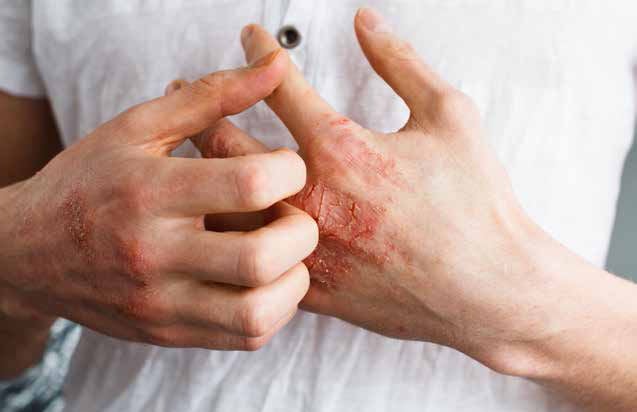
Eczema can occur in both children and adults, and understanding its causes and triggers is key to effective treatment.
Avoiding seafood is unlikely to prevent eczema or its recurrence. The itchy skin condition is more likely to be triggered by heat, sweat, pet fur, or stress, especially in adult sufferers.
While food like dairy milk, eggs and peanuts may cause eczema, they are more likely to do so in children, and not adults.
“Eczema, or atopic dermatitis, is a chronic skin inflammation that waxes and wanes due to a defective skin barrier and an altered immune system response,” said Dr Karen Choo, Consultant, Allergy Unit, and Department of Dermatology, Singapore General Hospital (SGH).
The skin plays an important protective barrier against ultraviolet (UV) radiation, hazardous substances, and moisture loss. It can be impaired because of genetics, environmental allergens, stress, or an overactive immune system, said Dr Uma Alagappan, Consultant, Dermatolgy Service, KK Women’s and Children’s Hospital (KKH), and Visiting Consultant, Department of Dermatology, SGH.
In Singapore, about one in five children and one in 10 adults suffer from eczema. Atopic dermatitis can be passed from parent to child, so a child is more likely to develop the condition if one or both parents have it, or if a family member has either allergic rhinitis or asthma.
As children grow, the skin matures and its barrier function improves. Some 80 per cent of children outgrow atopic dermatitis by the time they are eight years old. However, those who develop eczema later or whose symptoms are severe are likely to have persistent eczema, said Dr Uma.
Mimic symptoms
Eczema, with its itchy red rashes and dry skin, may mimic another skin condition known as contact dermatitis. Contact dermatitis occurs when the skin touches a substance or material that irritates it or causes an allergic reaction, such as detergent, soap, nickle-containing jewellery or personal care products. The rash can occur after a single exposure or after many exposures over the years.
Unlike eczema, part of the treatment for contact dermatitis is to identify the culprit causing the rash and avoid being exposed to it again, said Dr Choo. For instance, a rectangular-shaped rash on the skin is more likely due to contact dermatitis, if a similar shaped plaster was applied on it before.
Education and lifestyle modifications are the basic treatments for eczema in both children and adults. Emollients and moisturisers are essential for atopic dermatitis, and should be used regularly and liberally, said Dr Choo, adding that generally, the greasier that can be tolerated, the better.
Practising stress-relieving activities like yoga and mindfulness, and good skin care can also help, said Dr Uma.
In mild to moderate eczema, steroid creams may be prescribed to reduce inflammation. Other treatments are calcineurin inhibitor creams and phototherapy. For severe atopic dermatitis, biologics or immune-modulating medication may be used.
Possibly a life-long disease, eczema can disrupt sleep, and with it, work and education. “At SGH and KKH, we work with counsellors from the psychology and social work services departments to offer behavioural therapy to reduce the itch-scratch cycle, and teach distraction and relaxation techniques,” said Dr Choo.
Growing into adulthoodChildren with chronic eczema are managed at KKH by a multidisciplinary team of dermatologists, dedicated nurses, pharmacists, cousellors from the psychology and social work departments. If their condition persists into adulthood, they are transferred to the SGH Transitional Eczema Service when they turn 18. The set-up at SGH is similar, and includes dermatologists, a dedicated dermatology nurse, and a psychologist. The team helps patients ease into their new environment. To further aid this transition, Dr Uma from KKH is part of the chronic eczema team in SGH. The eczema team from both hospitals meet regularly to ensure a smooth handing over of current clinical information, goals, and care needs of adolescent patients. |
Myths debunkedMYTH: Topical steroids will thin the skin, so use them sparingly or only for a flare-up. MYTH: Topical steroids have the same side effects as oral steroids. MYTH: Once topical steroids are used, ever higher doses of steroids will be needed, making the user dependent on them. |
Get the latest updates about Singapore Health in your mailbox! Click here to subscribe.













 Get it on Google Play
Get it on Google Play